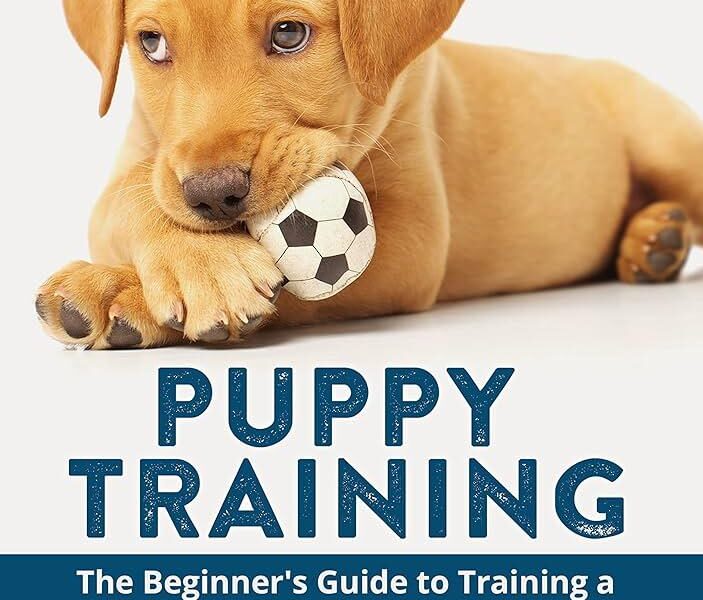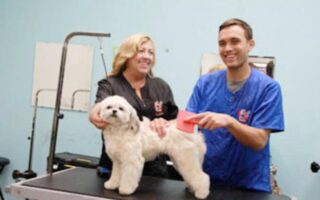Welcoming a new puppy into your home is an exciting adventure filled with laughter, joy, and, let’s be honest, a few messy moments. As these curious little furballs explore their surroundings, the road to becoming a well-mannered companion can often feel daunting. But what if we told you that mastering puppy training doesn’t have to come with a hefty price tag? In this guide, we will explore the world of free puppy training resources that can transform your enthusiastic bundle of fur into a well-behaved member of your family. From online tutorials to community classes and clever tips from seasoned trainers, you’ll discover that the key to effective puppy training is not only accessible but also enjoyable. Let’s embark on this journey together, as we unlock the secrets to nurturing a happy, obedient pup without breaking the bank.
Table of Contents
- Engaging Techniques for Effective Free Puppy Training
- Creating a Positive Learning Environment for Your Puppy
- Essential Commands Every Puppy Should Master
- Building a Strong Bond Through Fun Training Activities
- Q&A
- Final Thoughts
Engaging Techniques for Effective Free Puppy Training
When embarking on your puppy training journey, incorporating games and interactive activities can significantly enhance the learning process. Not only do these techniques foster a strong bond between you and your puppy, but they also stimulate their minds. Consider the following engaging methods:
- Hide and Seek: This classic game can be tailored for your puppy. Hide in different parts of your house and call your puppy’s name, rewarding them when they find you.
- Obstacle Courses: Create a mini agility course using household items. Encourage your puppy to navigate through it, which not only trains obedience but also improves physical fitness.
- Tug of War: Using a sturdy toy, play tug of war. It’s a great way to teach your puppy about controlled play and strengthens their grip.
In addition to play, incorporating positive reinforcement is crucial for effective training. Puppies learn best through repetition and rewards, so keep the following principles in mind:
| Action | Reward |
|---|---|
| Sit | Small treat & praise |
| Stay | Favorite toy |
| Come | Playtime |
Emphasizing these techniques not only aids in a smoother training experience but also establishes a joyful atmosphere, making learning a delightful adventure for both you and your furry friend.
Creating a Positive Learning Environment for Your Puppy
Creating a cheerful and engaging atmosphere is essential for your puppy’s early learning experience. A positive setting promotes not only good behavior but also strengthens the bond between you and your furry friend. Consider the following elements to enhance your training sessions:
- Consistency: Stick to a routine for feeding and training.
- Encouragement: Use praise and rewards frequently to motivate your puppy.
- Patience: Allow your puppy to learn at its own pace; rushing can lead to confusion.
- Safe Space: Create a designated area free from distractions where your puppy can focus.
Engagement during training is pivotal. Aim to make each session enjoyable and interactive to keep your puppy excited. Try breaking the lessons into short, fun bursts, combining learning with play. Here’s a simple table to illustrate effective training activities:
| Activity | Description |
|---|---|
| Fetch | Encourages physical activity and retrieves commands. |
| Hide and Seek | Strengthens recall skills and builds trust. |
| Obstacle Courses | Enhances agility while incorporating commands. |
Essential Commands Every Puppy Should Master
Key Training Commands
When embarking on your journey to train a new puppy, mastering a few crucial commands can significantly enhance your communication and strengthen your bond. Some of the essential commands to focus on include:
- Sit: A fundamental command that helps instill discipline.
- Stay: Ensures your puppy remains in one position, promoting safety and control.
- Come: Vital for recall and safety, this command helps you call your puppy back to you.
- Leave it: Essential for preventing your puppy from picking up potentially harmful objects.
- Heel: Teaches your puppy to walk calmly beside you on a leash.
Training Tips for Success
To ensure effective learning, make use of positive reinforcement. Pair these commands with treats, praise, or playtime to create a rewarding experience. Keep training sessions short, engaging, and consistent. Here’s a quick overview of these essential commands along with some tips:
| Command | Training Tips |
|---|---|
| Sit | Use a treat to guide your puppy’s nose upwards. |
| Stay | Gradually increase the distance and time before rewarding. |
| Come | Always call your puppy in a positive, enthusiastic tone. |
| Leave it | Start with an item the puppy has no interest in. |
| Heel | Begin in a distraction-free environment to get their attention. |
Building a Strong Bond Through Fun Training Activities
Engaging your puppy in playful training activities can pave the way for a profound relationship built on trust and understanding. By incorporating fun into training sessions, you not only keep your furry friend motivated but also encourage a positive mindset towards learning. Here are several key activities that can turn routine training into a delightful experience:
- Hide and Seek: This classic game not only entertains but also sharpens your puppy’s recall skills.
- Obstacle Course: Create a simple course using household items to promote agility while reinforcing commands.
- Fetch with a Twist: Use different toys to hold your puppy’s interest while you practice retrieval and obedience.
- Scent Work: Incorporate treats or toys for your puppy to find, enhancing their natural curiosity and scenting abilities.
As you embark on these activities, remember to celebrate small victories. Positive reinforcement, like treats or praise, can create a joyful atmosphere that encourages your puppy to participate enthusiastically. Below is a simple guideline to help you track your training methods and progress:
| Activity | Benefits | Duration |
|---|---|---|
| Hide and Seek | Improves recall and strengthens bond | 10-15 minutes |
| Obstacle Course | Enhances agility and focus | 15-20 minutes |
| Fetch | Encourages exercise and playfulness | 15 minutes |
| Scent Work | Stimulates mental engagement | 10-15 minutes |
Q&A
Q: What is free puppy training?
A: Free puppy training refers to various resources and strategies available at no cost to help new puppy owners teach their furry friends essential commands and good behavior. This may include online articles, video tutorials, community workshops, or free apps designed for puppy training.
Q: Where can I find free resources for puppy training?
A: There are numerous avenues to explore for free puppy training resources. Websites dedicated to dog training, platforms like YouTube, and social media groups focused on pet care often provide valuable information. Additionally, local animal shelters and pet stores sometimes host free training classes or workshops.
Q: Are free resources as effective as paid training services?
A: While free resources can be incredibly helpful, their effectiveness often depends on how consistently and correctly you apply the concepts learned. Paid services usually offer personalized guidance and hands-on experience, which can be beneficial, especially for first-time dog owners. However, many people have successfully trained their puppies using only free resources with dedication and patience.
Q: What are some key things I should learn when training my puppy?
A: Key skills to learn include basic commands like sit, stay, come, and heel. It’s also crucial to understand concepts such as positive reinforcement, the importance of socialization, and effective communication with your puppy. Building a consistent routine and being patient are essential foundations for successful training.
Q: How can I ensure my puppy stays engaged during training?
A: Keeping training sessions short and fun is vital to maintaining your puppy’s engagement. Use treats, toys, or praise as rewards to create positive associations with training. Incorporating play into learning can make sessions more enjoyable and help your puppy remain focused.
Q: Is there a specific age for starting puppy training?
A: Training can begin as early as eight weeks of age. Puppies are like sponges during their early developmental stages, so starting training early helps them learn basic commands and adapt to their new environment. However, it’s never too late to start training; older dogs can learn too!
Q: What common mistakes should I avoid when training my puppy?
A: One common mistake is inconsistency in commands and rules. It’s essential to use the same cues and establish clear boundaries. Additionally, avoid negative reinforcement, as it can damage the bond between you and your puppy. Instead, focus on positive reinforcement techniques to motivate your puppy to learn.
Q: How can I measure my puppy’s training progress?
A: Monitoring your puppy’s response to commands and their ability to perform them in various situations can help gauge progress. If your puppy consistently follows cues without distractions, that’s a good sign! Additionally, tracking milestones and celebrating small achievements can help you stay motivated and aware of your puppy’s development.
Q: Do free puppy training programs offer any follow-up support?
A: Most free resources do not offer personalized follow-up support, but they sometimes provide community forums or access to fellow pet owners who can share their experiences. For those who might need more tailored assistance, seeking a local trainer or joining a training group can supplement your learning.
Q: What should I do if I’m not seeing results from free training methods?
A: If progress appears stagnant, consider adjusting your approach. Change the training environment, vary rewards, or introduce new methods from different resources. Sometimes a fresh perspective can make all the difference. If challenges persist, consulting with a professional trainer may provide additional insights.
—
This Q&A format provides helpful, straightforward answers while encouraging puppy owners to explore and utilize free resources effectively.
Final Thoughts
embarking on the journey of puppy training doesn’t have to come with a hefty price tag. With the right resources, commitment, and a sprinkle of patience, you can cultivate a well-behaved companion right from the comfort of your home. Whether you choose to leverage online tutorials, local community classes, or simply lean on the wisdom of experienced dog owners, the tools for free puppy training are readily available. Remember, every pup is unique, and the most effective training approach will resonate with both you and your furry friend. As you take these steps together, you’re not just teaching commands; you’re building a lasting bond that will make your adventures together all the more rewarding. So gather your treats, don your training cap, and get ready to unleash the potential within your puppy—after all, the journey to a well-trained dog is as enjoyable as the destination. Happy training!



